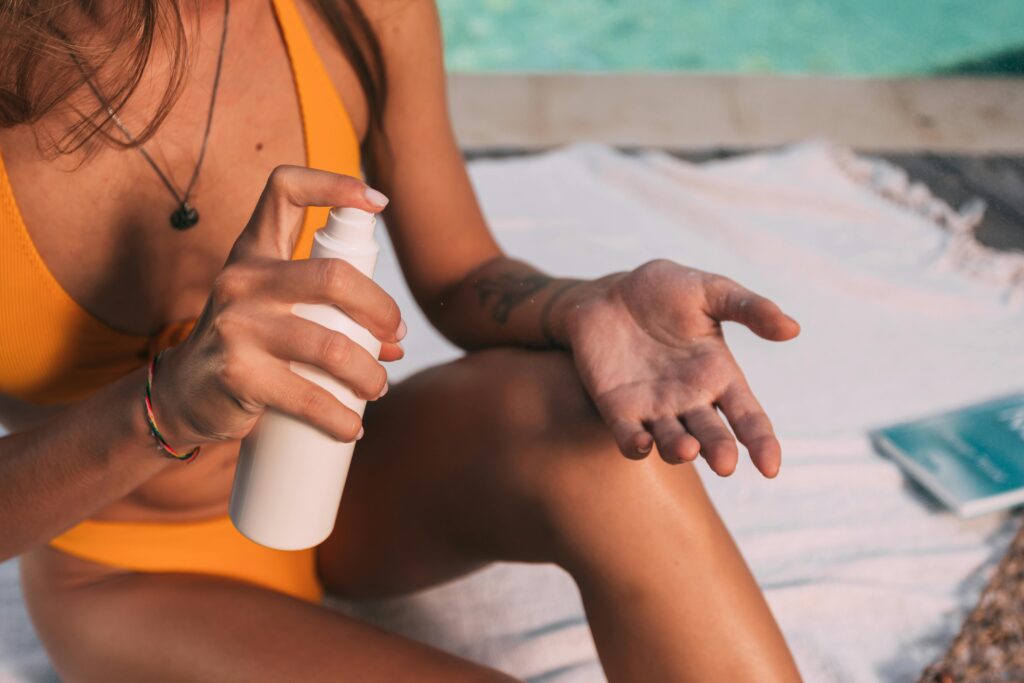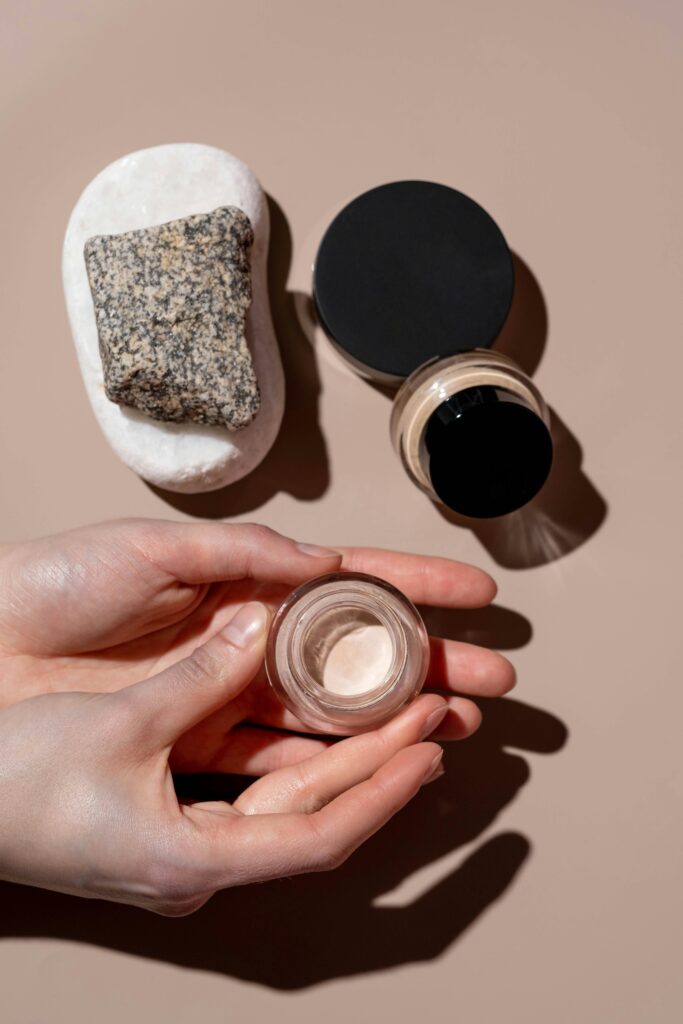the Best Sunscreen is essential for protecting your skin from harmful ultraviolet (UV) rays, which can cause sunburn, premature aging, and increase the risk of skin cancer. Daily application of sunscreen helps prevent these damaging effects by providing a barrier that absorbs or reflects UV radiation. Using sunscreen consistently is one of the most effective ways to maintain healthy skin, especially during prolonged exposure to the sun. It’s important for everyone, regardless of skin type or tone, to incorporate sunscreen into their daily skincare routine to ensure comprehensive protection.
Understanding UV Radiation
UV radiation from the sun consists of UVA and UVB rays, both of which can harm the skin. UVA rays penetrate deeply, leading to premature aging and long-term damage, while UVB rays cause sunburn and can directly damage DNA. Understanding the differences between these rays highlights the importance of broad-spectrum sunscreens that protect against both. By using sunscreen, you can significantly reduce the risk of these harmful effects and keep your skin healthy.
SPF Rating

What is SPF?
SPF, or Sun Protection Factor, measures a sunscreen’s ability to protect against UVB rays. The number indicates how long it would take for UVB rays to redden the skin when using the product compared to not using it. For example, SPF 30 means it would take 30 times longer to burn than without sunscreen. Choosing the appropriate SPF is crucial for adequate protection, with higher numbers offering more defense against UVB rays. Understanding SPF helps you select the right product for your skin’s needs.
Choosing the Right SPF for Your Skin
Choosing the right SPF depends on your skin type, the duration of sun exposure, and your activity level. For everyday use, an SPF of at least 30 is recommended, while higher SPFs may be necessary for extended outdoor activities. Those with fair skin or a history of skin cancer should opt for higher SPF levels. Additionally, considering factors like sweating or swimming, which can reduce sunscreen effectiveness, ensures you select an SPF that provides optimal protection under all conditions.
Broad-Spectrum Protection
UVA vs. UVB Rays
UVA and UVB rays are the two primary types of ultraviolet radiation that reach the earth. UVA rays penetrate deeper into the skin, leading to aging and long-term damage, while UVB rays cause sunburn and can damage the skin’s outer layers. Both types contribute to skin cancer. Broad-spectrum sunscreens protect against both UVA and UVB rays, ensuring comprehensive protection. Understanding the differences between these rays highlights the importance of using a broad-spectrum sunscreen to safeguard your skin effectively.
Benefits of Broad-Spectrum Sunscreens
Broad-spectrum sunscreens offer the advantage of protecting against both UVA and UVB rays, providing more complete sun defense. This comprehensive protection helps prevent immediate issues like sunburn and long-term damage such as premature aging and skin cancer. Using broad-spectrum sunscreens ensures that you’re shielded from the full spectrum of harmful UV radiation. This makes them a crucial part of any sun protection routine, promoting healthier skin and reducing the risk of UV-related skin problems.
Water Resistance
Understanding Water Resistance Labels
Water resistance labels on sunscreen indicate how long the product remains effective while swimming or sweating. Typically, sunscreens are labeled as water-resistant for either 40 or 80 minutes. Understanding these labels helps you choose a product that matches your activities. For prolonged water exposure, opt for higher water resistance. Reapplication after swimming, sweating, or towel drying is essential to maintain protection. Knowing these details ensures you remain protected during outdoor activities involving water.
Best Practices for Water Activities
For optimal sun protection during water activities, choose a water-resistant sunscreen with a high SPF. Apply generously 15 minutes before entering the water, ensuring even coverage. Reapply every 40 to 80 minutes, depending on the label, and immediately after swimming or towel drying. Wearing UV-protective clothing, hats, and sunglasses can enhance protection. Following these best practices helps maintain effective sun defense during swimming, sports, or other water-based activities, reducing the risk of sunburn and long-term damage.
Ingredients to Look For

Mineral vs. Chemical Sunscreens
Mineral sunscreens, containing zinc oxide or titanium dioxide, sit on the skin’s surface and reflect UV rays. They are gentle, making them suitable for sensitive skin. Chemical sunscreens, with ingredients like avobenzone and octocrylene, absorb UV radiation and convert it into heat. They often feel lighter and are easier to apply. Understanding the differences between these types helps you choose a sunscreen that suits your skin type and preferences, ensuring effective and comfortable sun protection.
Key Active Ingredients
Key active ingredients in sunscreens determine their effectiveness and suitability for different skin types. Zinc oxide and titanium dioxide are popular in mineral sunscreens for their broad-spectrum protection and gentleness on sensitive skin. Chemical sunscreens often contain avobenzone, octocrylene, and oxybenzone, which provide effective UV absorption. Additionally, ingredients like antioxidants can enhance protection by neutralizing free radicals. Knowing these ingredients helps you select a sunscreen that offers optimal protection and compatibility with your skin.
Skin Type and Sensitivity
Sunscreen for Different Skin Types
Selecting the right sunscreen for your skin type ensures optimal protection and comfort. For oily or acne-prone skin, choose non-comedogenic, oil-free formulas that won’t clog pores. Dry skin benefits from sunscreens with hydrating ingredients like hyaluronic acid or glycerin. Sensitive skin may require mineral sunscreens with zinc oxide or titanium dioxide, which are less likely to cause irritation. Tailoring your sunscreen choice to your skin type ensures effective sun protection while addressing specific skin needs.
Hypoallergenic and Non-Comedogenic Options
Hypoallergenic and non-comedogenic sunscreens are ideal for sensitive and acne-prone skin. Hypoallergenic formulas are less likely to cause allergic reactions, while non-comedogenic products are designed not to clog pores. These options help prevent irritation and breakouts, making them suitable for those with delicate skin conditions. By choosing hypoallergenic and non-comedogenic sunscreens, you can protect your skin from harmful UV rays without compromising its health or comfort, ensuring a pleasant and safe sun protection experience.
Application and Reapplication

Proper Application Techniques
Proper application techniques are crucial for effective sun protection. Apply sunscreen generously to all exposed skin, using about one ounce (a shot glass full) for full body coverage. Apply 15 minutes before sun exposure to allow it to fully absorb. Don’t forget often-missed areas like the ears, neck, and tops of feet. Even coverage is essential, as missed spots can lead to burns. Proper application ensures that sunscreen provides its maximum protective benefits against UV radiation.
How Often to Reapply
Reapplying sunscreen is essential for maintaining protection throughout the day. Sunscreen should be reapplied every two hours, and more frequently if swimming, sweating, or towel drying. This ensures continuous protection, as sunscreen can wear off or become less effective over time. Keeping a travel-sized sunscreen handy makes reapplication convenient. Consistent reapplication is key to effective sun protection, preventing sunburn and reducing the risk of long-term skin damage.
Environmental and Ethical Considerations
Reef-Safe Sunscreens
Reef-safe sunscreens are formulated without chemicals harmful to marine ecosystems, such as oxybenzone and octinoxate. These ingredients can cause coral bleaching and damage marine life. Choosing reef-safe options helps protect ocean health while providing sun protection. Look for sunscreens labeled as reef-safe or those that use mineral-based active ingredients like zinc oxide or titanium dioxide. By opting for environmentally friendly sunscreens, you contribute to the preservation of delicate marine ecosystems.
Cruelty-Free and Vegan Options
Cruelty-free and vegan sunscreens are produced without animal testing or animal-derived ingredients, aligning with ethical and environmental values. These products often use plant-based ingredients and sustainable practices, offering a compassionate choice for sun protection. Many brands now offer cruelty-free and vegan options without compromising on effectiveness. Choosing these sunscreens supports ethical practices in the beauty industry, ensuring your sun protection routine aligns with your values and promotes animal welfare.
Sunscreen Formats

Lotions, Sprays, Sticks, and Gels
Sunscreen comes in various formats, each with its advantages. Lotions provide thorough coverage and hydration, ideal for dry skin. Sprays are convenient for quick application and hard-to-reach areas but require careful application to ensure even coverage. Sticks are portable and mess-free, perfect for face and touch-ups. Gels are lightweight and absorb quickly, suitable for oily skin. Understanding the pros and cons of each format helps you choose the best sunscreen for your lifestyle and skin type.
Pros and Cons of Each Format
Each sunscreen format has unique pros and cons. Lotions offer comprehensive coverage but can be messy. Sprays are easy to apply but may require multiple passes for even coverage. Sticks provide targeted application but can be difficult to spread. Gels absorb quickly but may not be as moisturizing. Considering these factors helps you select the most convenient and effective sunscreen for your needs, ensuring consistent protection and ease of use.
Additional Protective Measures
Complementary Sun Protection Strategies
Complementary sun protection strategies enhance the effectiveness of sunscreen. Wearing protective clothing, such as long-sleeved shirts, hats, and sunglasses, provides physical barriers against UV rays. Seeking shade during peak sun hours (10 a.m. to 4 p.m.) and using umbrellas can further reduce exposure. Combining these strategies with regular sunscreen use offers comprehensive protection, minimizing the risk of sunburn and long-term skin damage. These measures ensure you stay protected while enjoying outdoor activities
.
Using Sunscreen with Other Protective Gear
Using sunscreen in conjunction with other protective gear maximizes sun protection. Apply sunscreen to all exposed skin, even when wearing UV-protective clothing and hats. Sunglasses with UV protection shield your eyes from harmful rays. This layered approach ensures comprehensive defense against UV radiation, protecting your skin, eyes, and overall health. By integrating sunscreen with additional protective measures, you can effectively guard against sun damage and enjoy a safer outdoor experience.
Common Myths and Misconceptions
Debunking Sunscreen Myths
Debunking sunscreen myths helps clarify effective sun protection practices. A common myth is that sunscreen is only necessary on sunny days, but UV rays can penetrate clouds, making daily use important. Another misconception is that higher SPF provides all-day protection; reapplication is still essential. Some believe sunscreen causes vitamin D deficiency, but it’s possible to maintain healthy levels through diet and supplements. Understanding the facts ensures you use sunscreen correctly for optimal protection.
Facts You Need to Know
Knowing key sunscreen facts helps you make informed decisions. Sunscreen should be a part of your daily routine, regardless of weather or season, as UV radiation is always present. Broad-spectrum sunscreens offer the best protection against UVA and UVB rays. Reapplication every two hours is crucial, especially during prolonged outdoor activities. No sunscreen is completely waterproof; reapply after swimming or sweating. These facts ensure you practice effective sun safety and protect your skin from damage.



